Humans have been trying to create machines for thousands of years to automate religious, military, or agricultural tasks.
Practical need often drives inventors, but the attempt to create something for the first time inevitably leads to mistakes and unexpected results, including strange machines.
Antikythera mechanism
One of the most difficult ancient machines to explain is the “Antikythera mechanism,” discovered in 1901 in the wreck of a Roman cargo ship near the island of Antikythera. The device dates back to between 205 and 87 BC, and its exact purpose remains a mystery.
Some scientists believe the machine could be an astronomical computer or an orrery - a model that tracks the cycles of celestial bodies like the moon and the Earth.
The front of the mechanism features a fixed dial displaying the plane of the earth's orbit around the sun and the 12 signs of the zodiac.
The outer face of the dial has another rotating ring, indicated by the months and days of the Egyptian Sothic calendar, as well as 12 months with 30 days each and a number of subsidiary days.
Whatever it is, the Antikythera mechanism is the most complex machine ever found from the period mentioned above.
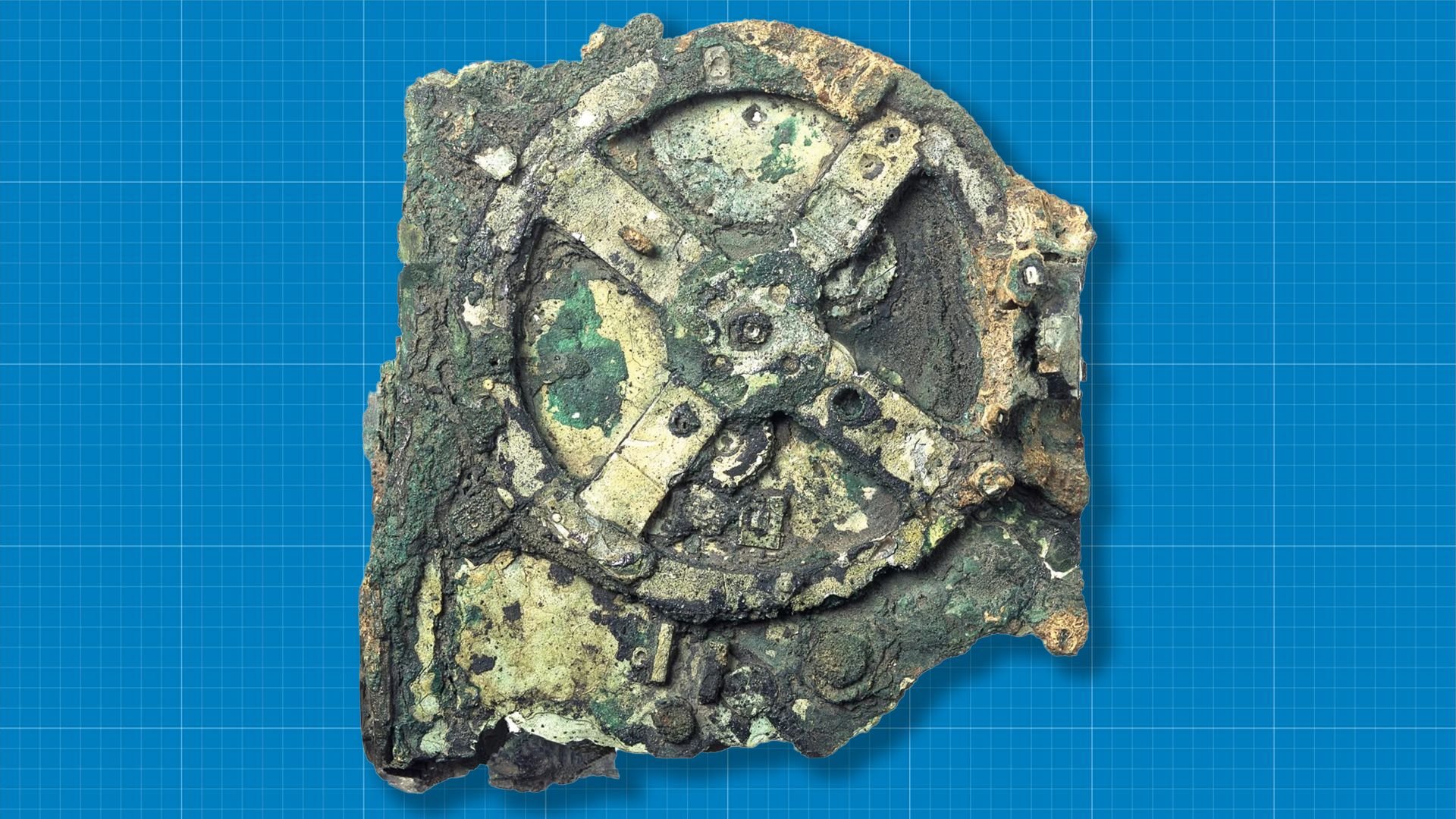
The main wheel of the Antikyther mechanism. Photo: National Archaeological Museum in Athens
Tsar Tank
The Russian Tsar Tank, known as the Netopyr or Lebedenko Tank, was a massive war machine.
Designers and scientists Nikolai Lebedenko, Nikolay Yegorovich Zhukovsky, Boris Stechkin and Alexander Mikulin created this largest armored vehicle in history.
Started in 1914, the project was abandoned in 1915 after initial tests showed the machine was underpowered and a major target for artillery.
However, the tank continued to arouse curiosity, with two front wheels measuring nearly 9 m in diameter and equipped with a 240 horsepower Maybach engine - one of the most powerful engines of the time.
According to Lebedenko, the large wheels are to help the car overcome obstacles, such as ledges and ditches. The car also has a smaller wheel at the back that is 1.5 meters high. The car's top speed is 16 kilometers per hour.
The tank also has an 8 m high turret while the 12 m wide hull is equipped with 2 additional guns.
Although the giant wheel was supposed to be able to overcome large obstacles, the small wheel got stuck in soft ground due to improper weight distribution.
This happened almost from the beginning of the trials, which lasted throughout 1915 until the project was abandoned.
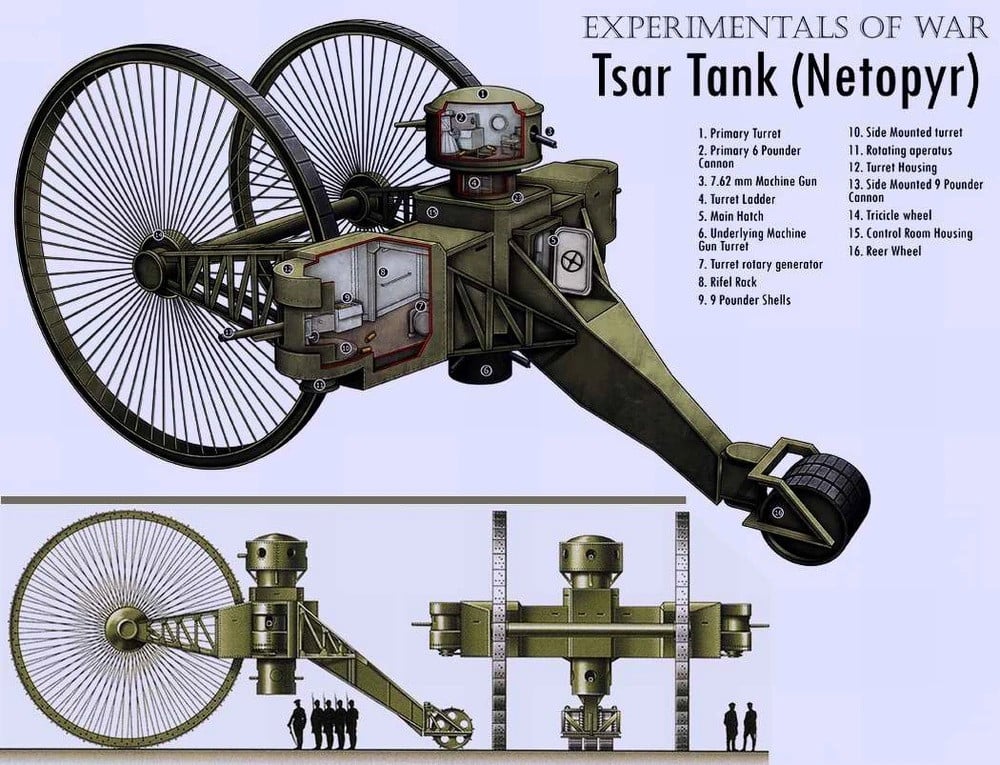
Tsar Tank. Photo: Russia Beyond
Tesla's Earthquake Machine
The genius inventor Nikola Tesla created many different designs and innovations, including some bizarre ideas. Although he originally built the oscillator to generate electricity, he later claimed that a version of his invention could create earthquakes.
The original oscillator invented by Tesla used steam to make pistons move up and down and vibrate at high speeds to generate electricity.
Tesla created several different versions of the device, and at a party in 1935, he claimed one version of the machine could create powerful vibrations—even enough to cause an earthquake in downtown New York City.
According to a contemporary news report, Tesla's device apparently caused an earthquake near his Manhattan laboratory, prompting the arrival of police and rescue workers.
Responding to a reporter from the New York World-Telegram , Tesla is said to have shared that while he was "experimenting with vibrations, the device picked up the vibrations of the building and made a strange cracking sound."
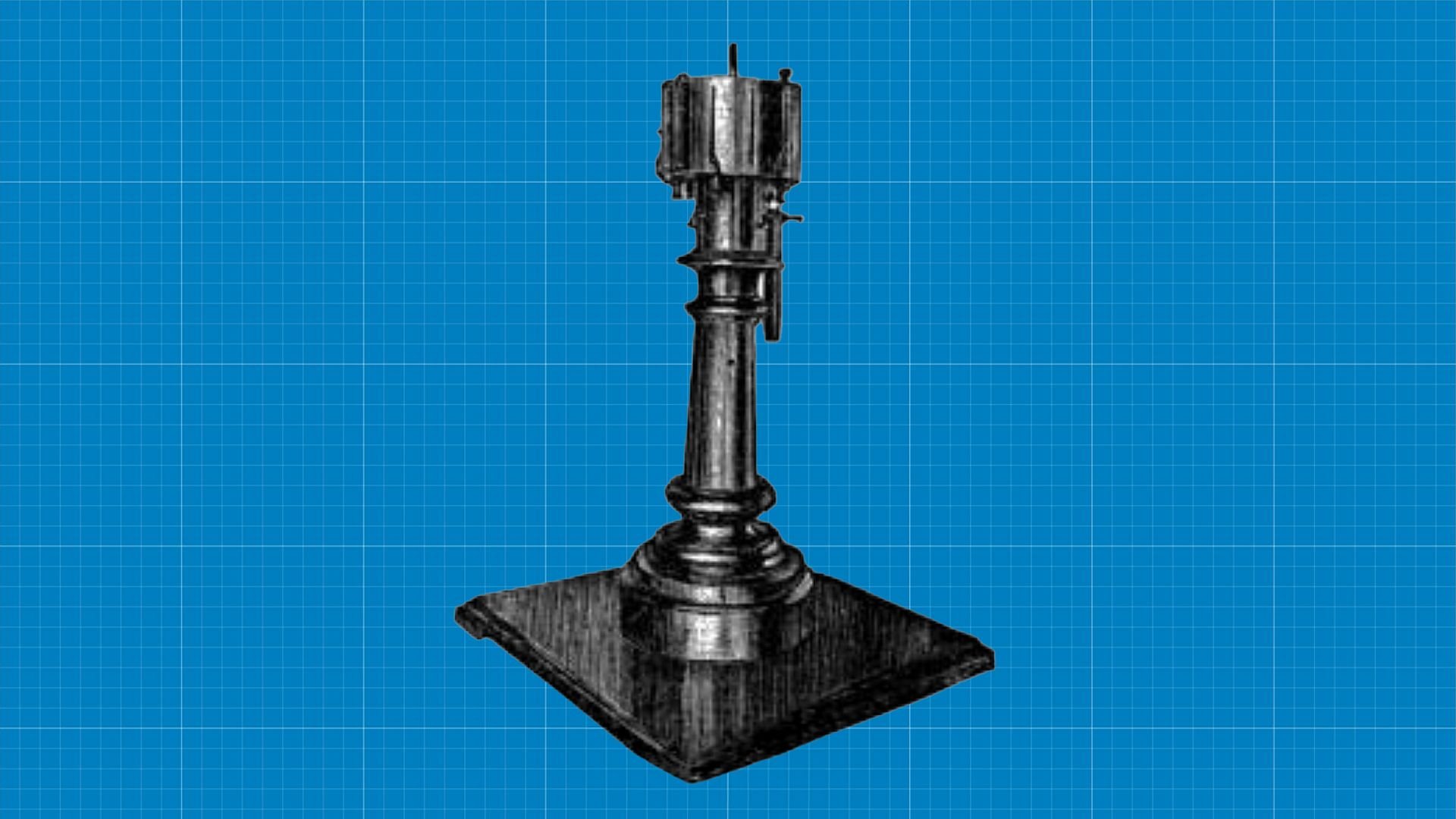
Tesla's earthquake generator at the 1893 World's Columbian Exposition. Photo: Wikimedia
All sorts of disturbances occurred, causing the heavy machinery to fall over. This forced Tesla to take a hammer and smash the machine.
Did that really happen? There's not much evidence beyond Tesla's own words, according to Interesting Engineering.
Dynasphere Unicycle
The Dynasphere unicycle, invented by British electrical engineer John Archibald Purves, was patented in 1930. It was inspired by a sketch by Leonardo da Vinci.
The Dynasphere can reach speeds of 30 mph with two people inside. What’s also interesting is that sitting in the Dynasphere can provide a unique perspective. When moving, the grid in front of the driver’s eyes seems to disappear as it passes by so quickly.
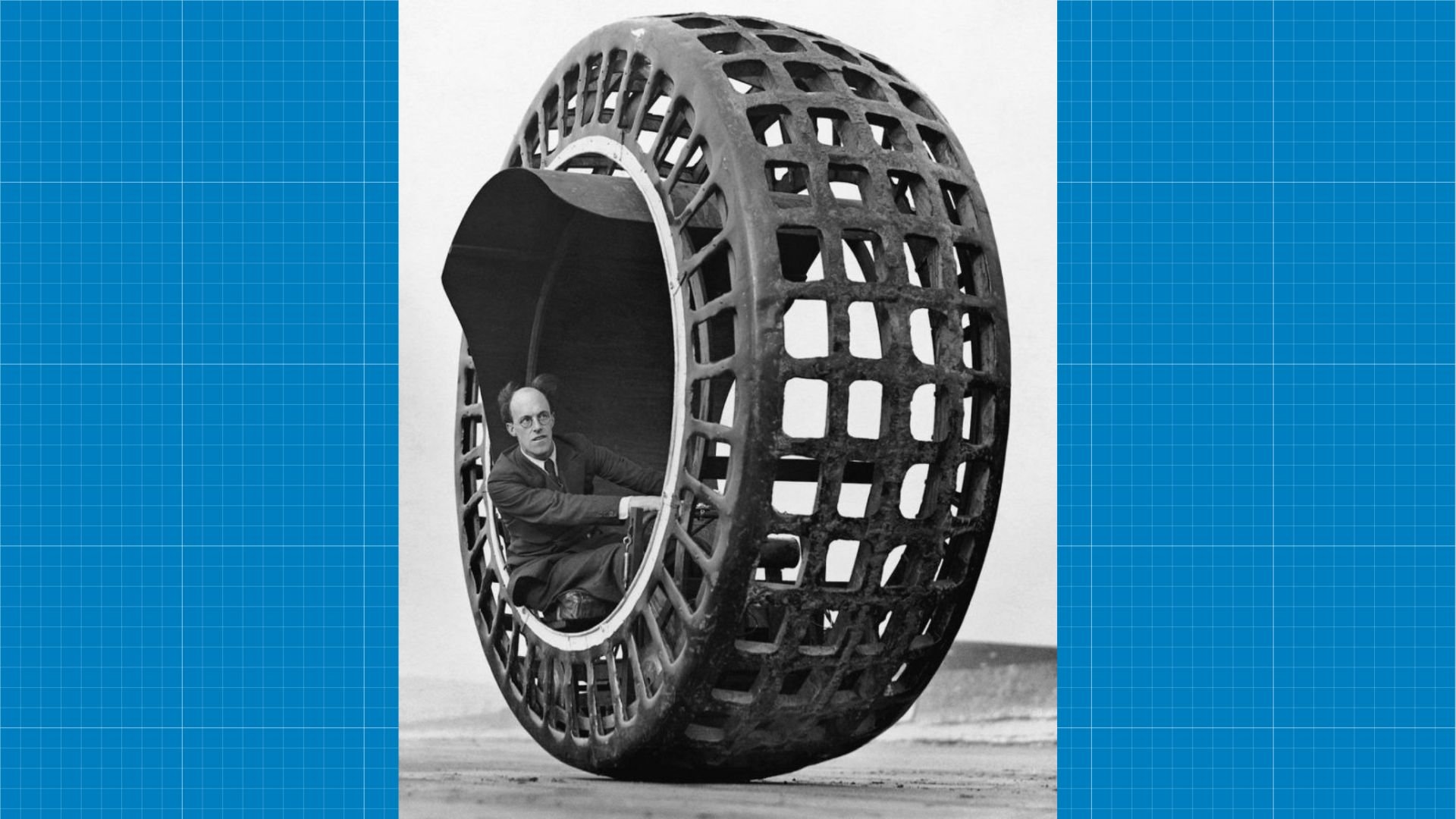
Dynasphere on the beach, piloted by engineer John Archibald Purves' son in 1932. Photo: Wikimedia
After building two prototypes of the dynasphere, Purves attempted to develop a bus version that could carry more people. However, this idea was never realized because of the difficulty of steering and braking.
Ornithopter
The Ornithopter is a strange machine built to hover in the air by literally flapping its wings, allowing humans to fly like birds or insects.
Ornithopters have been created in many different ways and experts are still working on new versions.
Some large, manned versions are powered by engines, while smaller versions have only one pilot who must do the flapping.
The history of ornithological aircraft design dates back at least 1,000 years. Andalusian inventor Abbas Ibn Ferns is believed to have experimented with powered aircraft in the ninth century.
Many different designs have been experimented with over the centuries until today, when manned and unmanned avian aircraft are produced for a variety of industrial and environmental purposes.
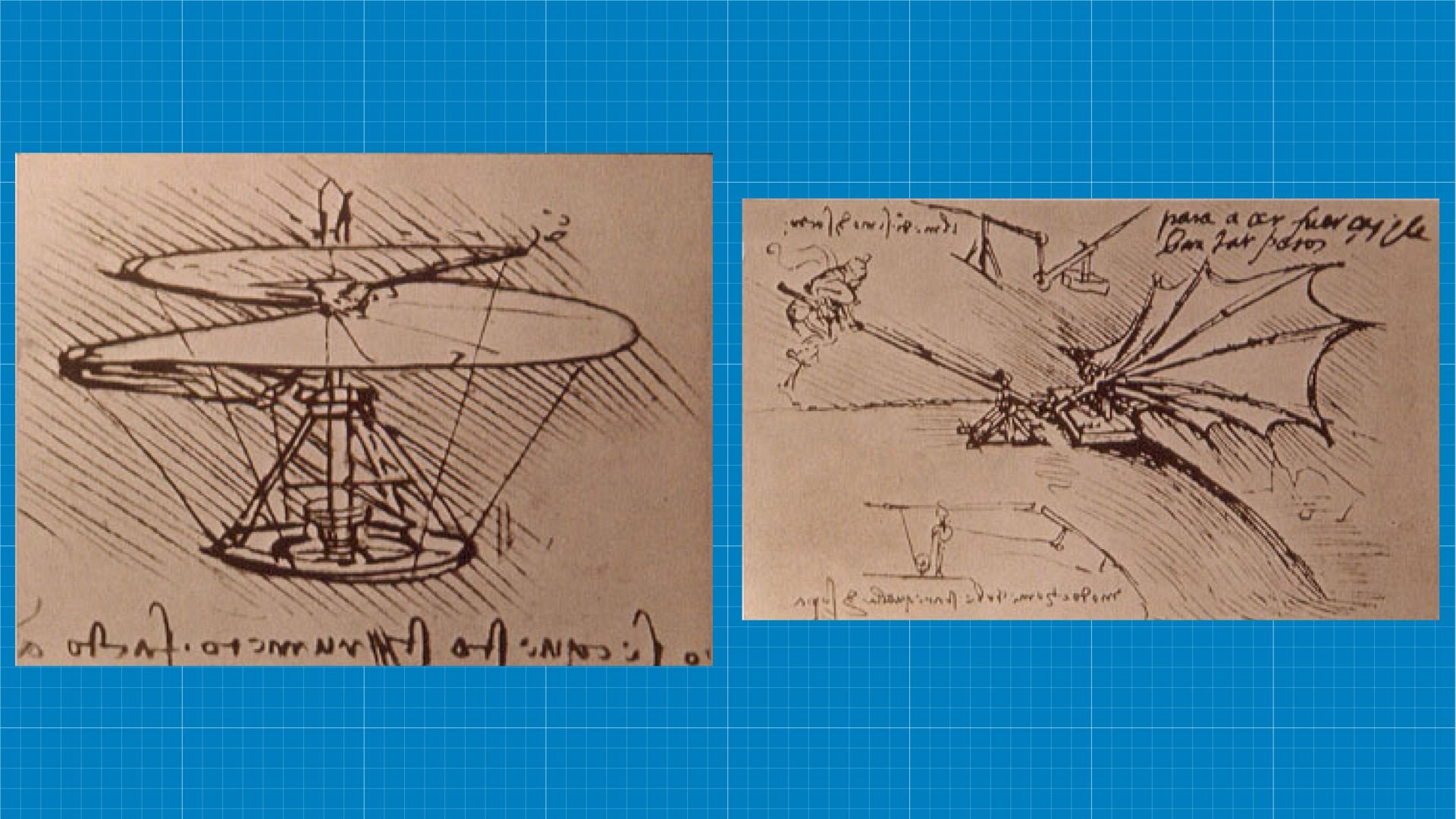
Leonardo da Vinci's design of a bird-winged aircraft. Photo: Wikimedia
Source: https://giadinh.suckhoedoisong.vn/nhung-phat-minh-ky-la-nhat-lich-su-172250202073341411.htm


































Comment (0)